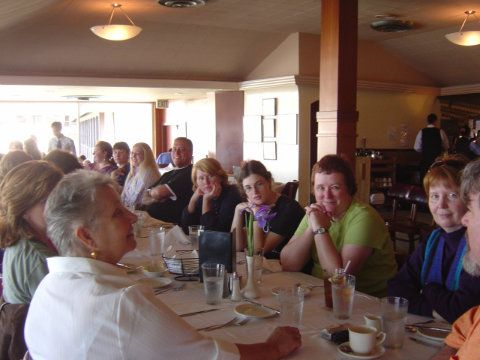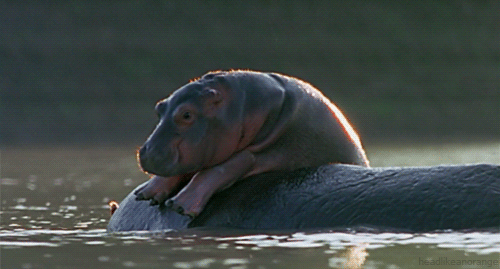
Revising Art History's Big Book: Who's In and Who Comes Out?
By RANDY KENNEDY
Published: March 7, 2006
In some ways, art history is like an episode of "The Sopranos." A relatively small number of artists are welcomed into the family of the famous, their works immortalized in museums and on postcard racks — in other words, they are made. But hit men, otherwise known as critics and scholars, are lurking around every corner, waiting to whack even the most sterling reputation.
Almost no one is safe. Not even, as it turns out, Whistler's mother.
This month, the publisher Pearson Prentice Hall is introducing the first thoroughly revised version of "Janson's History of Art," a doorstopper first published in 1962 that has been a classroom hit ever since Horst Woldemar Janson wrote it while working at New York University. For a generation of baby boomers, it defined what was what and who was who in art, from Angelico (Fra) to Zurbarán (Francisco de).
But in recent years it has lost its perch as the best-selling art survey and has been criticized for becoming a scholarly chestnut. So its publisher recruited six scholars from around the country and told them to rewrite as much as they wanted, to cast a critical eye on every reproduction, chapter heading and sacred cow.
The result, at more than 1,100 pages and 1,450 illustrations, will undoubtedly surprise many Janson loyalists, especially instructors who have taught from the book so long they can almost do so without cracking it open. The new edition drops not only Whistler's portrait of his mother but also evicts several other longtime residents, like Domenichino, the Baroque master, and Louis Le Nain, whose work is in the Louvre.
The sculptor Louis-François Roubiliac, for example, has been erased with a vengeance; even a portrait by another artist of Roubiliac posing with his work has been dropped. And some full-page reproductions that had become permanent fixtures — like the Metropolitan Museum of Art's van Eyck diptych, "The Crucifixion, the Last Judgment" — have been replaced with others seen to be more representative of an artist's work.
Although the publisher has now incorporated the name "Janson" into the title, the new edition, the seventh, is the first to have no Janson associated with it. H. W. Janson died in 1982, and his son, Anthony F. Janson, who took over and revised it several times, retired as the book's guiding light in 2002.
Sarah Touborg, the current editor, said about a quarter of the contents had been changed. "To have done less than that would have been tough, given our vision of renovating Janson," she said. "And doing more than that would have risked losing our very loyal base of customers."
"There's a strong affection for this book among teachers," she added. "It's their book."
But in many colleges, the book, while as familiar as furniture, had become something to teach against, its clear narrative of art's development, focused mostly on Europe, muddied considerably since the early 1960's by changes in scholarship that began to place art more solidly in a social and political context.
The first editions included no women artists; even through versions published into the mid-1970's, Mary Cassatt, for example, went unmentioned. Oddly, Jackson Pollock was in the first edition, only six years after his death, but photography was not included until relatively recently.
The new book adds many more women, and for the first time, decorative arts are included. And it uses art much more as a way to discuss race, class and gender. In the introduction, on pages that once used Dürer and Mantegna to examine the concept of originality, Chris Ofili's "Holy Virgin Mary" — a painting that rested on clumps of elephant dung and created a furor when it was shown in Brooklyn in 1999 — is used to talk about differences between Western and African ways of seeing. "Art is never an empty container," the introduction states. "Rather, it is a vessel loaded with meaning."
The book's new authors warn that because their approach diverges from the model H. W. Janson pioneered — the showcasing of individual geniuses and masterpieces — the exclusion of works should not necessarily be looked at as beloved artists being unceremoniously escorted out of the canon. But because Janson, as it is called, was so influential in undergraduate courses for so long, some teachers say they cannot help but view the revision that way.
"I can see the reasons, artistically, for dropping Whistler's mother," said Mickey McConnell, an instructor who until recently taught a survey course at the University of New Mexico and has used Janson for years. "But it's become so well known, such a part of the culture. What if there's a cartoon in The New Yorker that uses it as a reference? Younger students aren't going to know what it's talking about."
Joseph Jacobs, a curator and scholar who wrote the modern chapters of the new edition, said he often struggled with the question of what he could dare to take out. But when he decided to replace Whistler's portrait of his mother with his "Symphony in White No. 2," Mr. Jacobs said, he didn't think twice about it, "which is terrible, I guess, isn't it?"
"Yes, it's a famous piece and everyone teaches it," he said, "but the 'Symphony in White' — you can just do so much more with it, talking about the Japanese influences on Whistler's work and a lot of things that allow you to see how fantastic a painter he really was."
He also added some works that have long been cultural superstars, like Grant Wood's "American Gothic," which surprisingly had never appeared in Janson. (This might have been because Wood and H. W. Janson once taught together in Iowa and were said to have disliked each other.)
As with all renderings of history, deciding who made the cut and who did not often came down to the mundane realities of publishing: page counts and deadlines. "There had to be tradeoffs," said Frima Fox Hofrichter, chairwoman of the history of art and design department at Pratt Institute, who wrote the chapters on the Baroque and Rococo. She enlarged sections on Judith Leyster, a Dutch Baroque painter, and added women like Clara Peeters, a 17th-century Flemish still-life painter, who had never been included.
Mr. Jacobs said he would have liked to include Audubon and was disappointed that he had to leave out the photographer August Sander and the performance artist Ana Mendieta, among many others. But he was able to beef up both Marcel Duchamp and Robert Rauschenberg, moves he said were long overdue.
Stephen F. Eisenman, a professor of art history at Northwestern University who described himself as a longtime critic of Janson, welcomed many of the changes. "It's clearly a liberal version of a cold-war classic that will pass muster in most of the U.S.," he said.
But he added that it would probably never regain the dominance it once had, simply because the whole idea of a book like it, or other supposedly all-inclusive surveys like "Gardner's Art Through the Ages," first published in 1926, had become outdated.
"The main problem, I think, is that there's no longer a general belief that there exists a single canon for art that should be taught to all students," he said.
Dr. Hofrichter, who has taught from Janson for many years, counters that teachers and students need a book to use as a starting point and basic guide to what should be considered important. But she said she had also often "taught against" Janson during her career, which leaves her in a strange predicament.
"Now," she said, "I'll have only myself to teach against."


